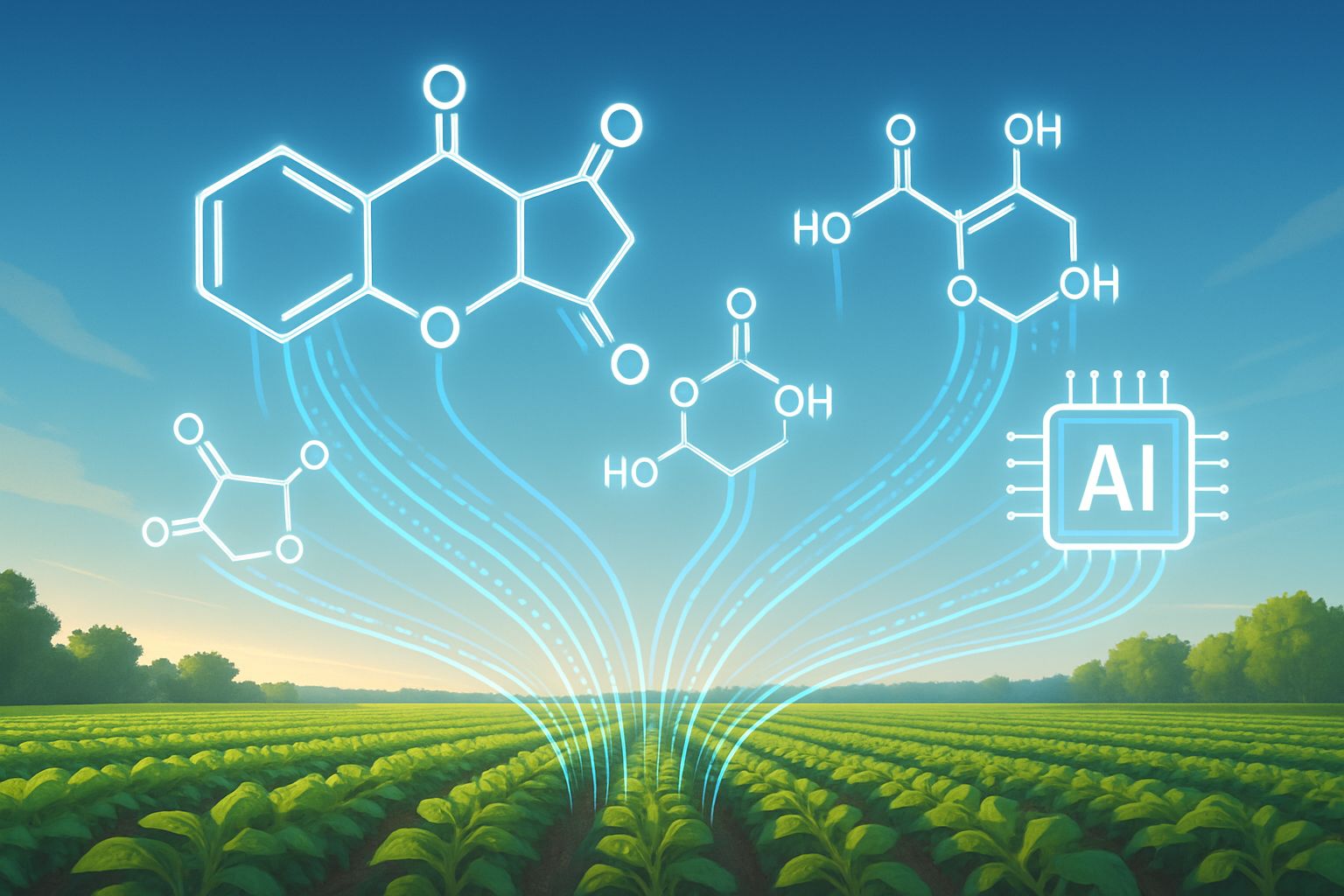
AI CERTS
17 hours ago
Teen Startup Uses AI Molecular Discovery Engines for Pesticides
Up to forty percent of global harvests vanish to pests annually, according to FAO estimates. Meanwhile, discovery costs and timelines have ballooned, leaving incumbents hungry for faster tools. Bindwell argues its speedier models shrink both bench time and budget.

Funding Signals Market Shift
General Catalyst and A.Capital co-led the round, with SV Angel and Paul Graham joining. Moreover, the founders rejected pure software licensing, choosing instead to own novel molecule IP. Investors view that stance as higher risk yet potentially higher return.
Neeraj Arora of General Catalyst called pesticide discovery the last untapped frontier for applied machine learning. Therefore, the $6 million injection funds lab automation, hiring, and regulatory groundwork. AI Molecular Discovery Engines sit at the heart of that spending plan. Consequently, Bindwell may progress its first candidate toward greenhouse trials within eighteen months.
Inside Bindwell's Tech Stack
Bindwell touts three core models: Foldwell, PLAPT, and APPT. Foldwell predicts protein structures roughly four times faster than AlphaFold, according to internal benchmarks. Furthermore, PLAPT performs virtual screening across billions of compounds within hours.
Uncertainty quantification flags risky predictions before they reach wet-lab synthesis. Moreover, APPT analyzes protein-protein interactions to design biopesticides that bypass resistance pathways. All three algorithms integrate into unified AI Molecular Discovery Engines that guide chemists daily. Consequently, Bindwell claims computational turnaround times measured in minutes rather than days.
The stack also supports chemical synthesis AI workflows that propose feasible reaction routes. Therefore, lab scientists can evaluate practical manufacturability early. This integration reduces iteration loops between code and bench.
Bindwell's stack merges speed, scale, and manufacturability. However, technical prowess means little unless it solves growers' urgent problems.
Agriculture Pain Points Addressed
Farmers battle rising resistance, regulatory pressure, and climate-driven pest migration. Precision agriculture demands molecules that work at lower doses and spare beneficial insects. Consequently, Bindwell targets proteins unique to pest species, reducing off-target toxicity.
- FAO reports pests destroy up to 40% of global crops yearly.
- The industry spends about $300 million and ten years per new active ingredient.
- Global pesticide market estimates range between $60 billion and $120 billion.
These data underscore why investors chase scalable solutions. Moreover, AI Molecular Discovery Engines promise faster diversification of pesticide modes of action.
Bindwell positions itself as a precision agriculture enabler, not merely another chemistry supplier. Next, competition will test whether that narrative holds.
Competitive Landscape Snapshot View
Legacy giants like Bayer, Syngenta, and Corteva still dominate registration pipelines. In contrast, startups such as Atomwise and Agrematch apply related models but license software rather than molecules. Bindwell's IP-first strategy therefore distinguishes it within the crowded lab-automation field.
- Atomwise focuses on pharma yet experiments with crop targets.
- Agrematch markets a SaaS platform for active discovery.
- Generate Biomedicines explores protein design with healthcare partners.
- DeepMind's AlphaFold remains open but lacks direct agrochemical tooling.
Consequently, venture funds reward differentiated go-to-market plans. AI Molecular Discovery Engines give Bindwell control over data, models, and resulting patents.
The competitive map remains fluid as talent and capital migrate. However, regulation and ethics could slow everyone equally.
Risk And Governance Debate
Environmental NGOs caution against repeating past chemical mistakes. Friends of the Earth demands data proving new compounds spare pollinators and soil microbiomes. Nevertheless, Bindwell says structure-based design reduces unintended receptor binding.
Dual-use concerns also surface whenever models generate bioactive molecules quickly. Therefore, policy analysts urge transparency, access controls, and red-team exercises. Bindwell states it follows NIST guidance and internal review boards. Additionally, its AI Molecular Discovery Engines are isolated from public access to mitigate dual-use risks.
Responsible governance may ultimately decide market access as much as technical merit. Next, we consider timelines and traction.
Path To Commercial Impact
Bindwell operates a small San Carlos wet-lab for in-house assays. Subsequently, hits advance to greenhouse studies with academic collaborators. Precision agriculture partners may license successful molecules for field trials and registration.
The team projects a first regulatory filing in 2029, assuming supportive toxicology data. Meanwhile, chemical synthesis AI will refine cost models and pilot manufacturing routes. AI Molecular Discovery Engines remain central throughout, coordinating data from bench, greenhouse, and field.
Professionals can enhance their expertise with the AI + Engineering Certification. Consequently, teams gain shared language for deploying advanced models responsibly.
Early traction looks promising, yet hurdles remain long and expensive. Finally, what lies ahead for Bindwell and the wider sector?
Future Outlook And CTA
Market observers believe agrochemical innovation is entering a renaissance. Moreover, converging robotics, genomics, and AI Molecular Discovery Engines could compress discovery cycles from decades to years.
Nevertheless, transparent validation and ecological stewardship will determine long-term credibility. Bindwell must publish benchmarks, share toxicology data, and engage regulators early.
For industry professionals, staying current on AI tools is vital. Therefore, explore the linked certification to sharpen competitive advantage today.
AI Molecular Discovery Engines already reshape pesticide research, investment, and governance narratives. Precision agriculture gains as molecules become smarter and environmental footprints shrink. Join the conversation and prepare for the next wave of data-driven agronomy.
Consequently, the field awaits real-world trial results that will confirm or challenge Bindwell's bold claims. Success could demonstrate that small teams, armed with capital and AI Molecular Discovery Engines, out-innovate slower incumbents. Alternatively, setbacks would remind investors that biology resists pure software pacing. Nevertheless, the momentum around chemical synthesis AI and predictive models seems irreversible. Act now; deepen skills through the linked credential and drive the sustainable crop solutions that tomorrow demands.



